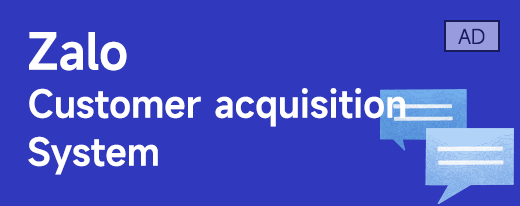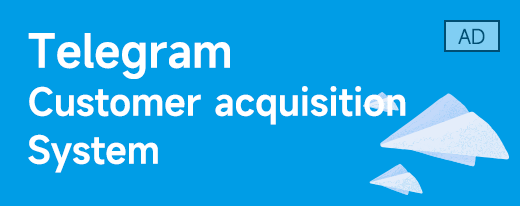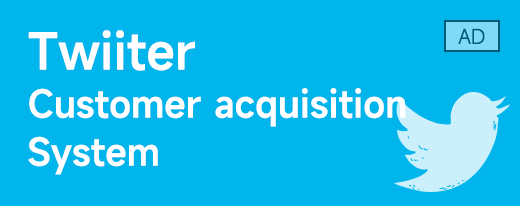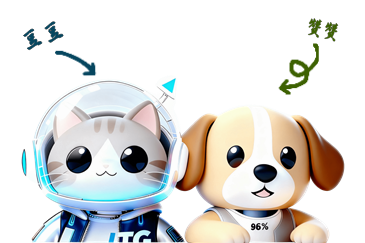In Telegram marketing, many operators mistakenly equate Telegram Online Time with user activity status. Blind promotions lead to marketing content being ignored and resources wasted. In fact, Telegram Online Time is only superficial data; what truly affects marketing results are the underlying willingness to be active and behavior patterns. With the help of the ITG Global Filter tool, we can dig deep into the behavioral logic within Telegram Online Time data, break the misunderstanding that "online equals active," and double marketing efficiency.
I. Breaking Misconceptions: Core Differences Between Telegram Online Time and Active Time
Operators often confuse these two concepts, unaware that they have essential differences in behavioral purposes and willingness to interact—this is the root cause of inefficient marketing.
(1) Online Time: A Passive "Status Label"
Telegram Online Time only indicates that a user's account is in a "connected state," and non-active scenarios account for a large proportion:
- Background running: Users switch to other apps after opening Telegram. The account shows "online," but their attention is completely outside the platform. Marketing content pushed at this time is likely to be buried in the notification bar;
- Quick browsing: Users only go online for 1-2 minutes to check important messages, with no time to pay attention to marketing content;
- Accidental online: Users accidentally click the Telegram icon, resulting in short-term online status, but they have no actual intention to use the platform.
According to data from the ITG Global Filter, 65% of pure Telegram Online Time falls into "inactive online," and the conversion rate of blind promotions is less than 3%.
(2) Active Time: An Active "Behavioral Signal"
Valuable active time refers to periods when users exhibit active behaviors during Telegram Online Time, with core characteristics including:
- High interaction frequency: Frequently sending messages, liking content, and participating in group discussions;
- Stable stay: Being online for more than 5 minutes at a time and returning to Telegram multiple times within an hour;
- Clear behaviors: Actively searching for keywords and clicking links, which directly reflect needs.
Tracking data from the ITG Global Filter shows that active time only accounts for 35% of Telegram Online Time, but the marketing conversion rate reaches 28%—9 times that of pure online periods.
(3) Key Difference: From "Status" to "Behavior"
Telegram Online Time represents the account's connection status, which can be viewed through the platform's native status and has low marketing value. Active time refers to periods of active behavior, which needs to be judged based on data such as interaction and duration, and requires integrated analysis by the ITG Global Filter, with significantly higher marketing value. Only by moving beyond "pushing content when seeing online status" can we get rid of inefficiency.
II. ITG Global Filter: The Core Tool for Mining Active Time
To accurately distinguish between the two, we need to rely on the ITG Global Filter to upgrade from "single status monitoring" to "multi-dimensional behavioral analysis."
(1) Core Function: Accurately Identifying Active Periods
The tool extracts active periods from Telegram Online Time through three dimensions:
- Behavioral filtering: Targeting users with active behaviors such as "sending ≥3 messages in the past hour" and "clicking ≥1 link";
- Duration filtering: Excluding inactive users who are "online for less than 5 minutes at a time";
- Frequency filtering: Identifying high-value users who are "active for ≥3 days in the past 7 days."
For example, by setting conditions like "Telegram Online Time: Past 2 hours + sending ≥2 messages + staying online for ≥8 minutes," an active user list can be generated in 30 seconds, avoiding resource waste.
(2) Data Advantages: Surpassing Native Functions
Compared with Telegram's native status display, the tool has obvious advantages:
- Comprehensive dimensions: Integrating 12 types of data such as messages, interactions, and clicks to restore active trajectories;
- Wide time span: Tracing back Telegram Online Time and active data from the past 30 days to identify long-term patterns;
- High accuracy: Combining regional and industry tags for cross-filtering to achieve dual targeting of "target audience + timing."
An education institution used it to filter out users from Beijing's Telegram Online Time who "clicked on education links ≥2 times in the past 3 days and stayed online for ≥10 minutes at a time," increasing the conversion rate from 5% to 32%.
(3) Operation Logic: Three Steps to Lock in Active Time
- Import the user pool and synchronize Telegram Online Time and behavioral data;
- Select filtering conditions for behavior, duration, and tags;
- Export a list containing "user ID + active period + preferences" and directly connect it to the promotion system. The entire process can be completed in 10 minutes.
III. Scenario Implementation: Marketing Strategies Based on Active Time
Combined with active data mined by the ITG Global Filter, formulating precise strategies for core scenarios maximizes marketing results.
(1) Product Promotion: Targeting Periods with Clear Needs
- Use the tool to filter users who "searched for 'e-commerce discounts' and clicked on related links ≥1 time in the past 24 hours." Their behaviors during Telegram Online Time clearly indicate shopping needs;
- Match active peaks (e.g., 20:00-22:00, with single active duration exceeding 15 minutes) to push preferential product information;
- For users who do not interact in time, push simplified preferential content when the ITG Global Filter detects their next activity (e.g., sending messages, returning to the platform) to avoid disturbance. An e-commerce brand used this strategy to increase click-through rate from 8% to 35% and order conversion rate to over 12%.
(2) Content Marketing: Aligning with High-Concentration Scenarios
- Filter highly focused active users who "stay online for ≥10 minutes at a time and do not send messages";
- Push matched content based on tags (e.g., industry reports for users in the technology sector) during active peaks (e.g., 12:30-13:30);
- Set up interactive links and add guidance during peak user interaction hours based on real-time active data monitored by the ITG Global Filter. A knowledge payment platform used this to increase content reading completion rate from 30% to 75% and user comments by 210%.
(3) User Re-engagement: Activating Inactive Users
- Filter inactive users who "have accumulated Telegram Online Time of ≥5 hours in the past 30 days but have no interaction";
- Push exclusive benefits (e.g., coupons, membership trials) when the tool detects their activity (e.g., sending messages, checking conversations);
- Incorporate successfully re-engaged users into the active user system and continue monitoring inactive users for active signals in their Telegram Online Time to avoid loss due to excessive promotions. A SaaS company increased its re-engagement rate from 12% to 48% and monthly retention rate of re-engaged users to 65%.
IV. Advanced Strategies: Data-Driven Efficiency Improvement
(1) Building an Active Behavior Profile Library
Based on the "data accumulation" function of the ITG Global Filter, build user active behavior profiles from three dimensions:
- Active period profile: Classify users into "morning active (7:00-9:00 AM)," "noon active (12:00-14:00 PM)," and "night active (20:00-22:00 PM)" to match marketing with corresponding periods;
- Behavioral preference profile: Record users' high-frequency behaviors during active periods (e.g., "prefer sending messages," "prefer clicking links") to design targeted marketing formats;
- Demand correlation profile: Link users' active behaviors with historical conversion data (e.g., "clicking education links → purchasing courses") to predict future needs.
(2) Dynamically Adjusting Active Time Filter Parameters
Users' active behaviors on Telegram change with time and scenarios, so filtering conditions need to be regularly optimized through the ITG Global Filter:
- Update data regularly: Analyze "changes in active user behaviors last week" with the tool every week. For example, if the proportion of users active at night on weekends increases from 40% to 60%, adjust the weekend marketing period;
- Consider external factors: During holidays, users' active time may advance or extend. For example, during the Spring Festival, if the tool detects a 50% increase in active users from 10:00-12:00 AM, adjust marketing pushes to this period;
- Optimize conditions based on feedback: Adjust filtering parameters according to marketing effect feedback. For example, if users who are "online for ≥8 minutes at a time" have a higher conversion rate than those online for ≥5 minutes, raise the filtering standard from 5 minutes to 8 minutes to further improve accuracy.
(3) Integrating Active Data Across Scenarios
Integrate Telegram Online Time data with data from other platforms to achieve omni-channel marketing synergy:
- Connect data: Link active user IDs on Telegram with users' behavioral data on official websites and apps through the ITG Global Filter. For example, if active Telegram users frequently visit product pages on the official website, push exclusive offers for those products on Telegram;
- Coordinate time periods: Analyze users' active time on different platforms. For example, if users are active on Telegram from 7:00-8:00 AM and on the app from 8:00-9:00 AM, push links guiding to the app on Telegram to achieve cross-platform conversion;
- Coordinate content: Push related product recommendations on other platforms based on users' active behaviors on Telegram (e.g., clicking beauty tutorials) to form a full-link marketing model of "content seeding → product conversion."
Conclusion
The inefficiency of Telegram marketing often stems from the misunderstanding that "online time equals active time." The core of high efficiency lies in penetrating the superficial data of Telegram Online Time to accurately capture the active time behind users' active behaviors. The value of the ITG Global Filter is to upgrade this "capture" process from "relying on experience" to "relying on data," ensuring that every marketing action accurately aligns with users' active status.
In an era of information overload, users have increasingly low tolerance for marketing content. Only by reaching the right people (active users) at the right time (active time) with the right message (needs-matched content) can we break through the growth bottleneck of Telegram marketing. Say goodbye to the blindness of "pushing content when seeing online status" and focus on the behavioral patterns behind active time—this is the key to improving Telegram marketing efficiency.










